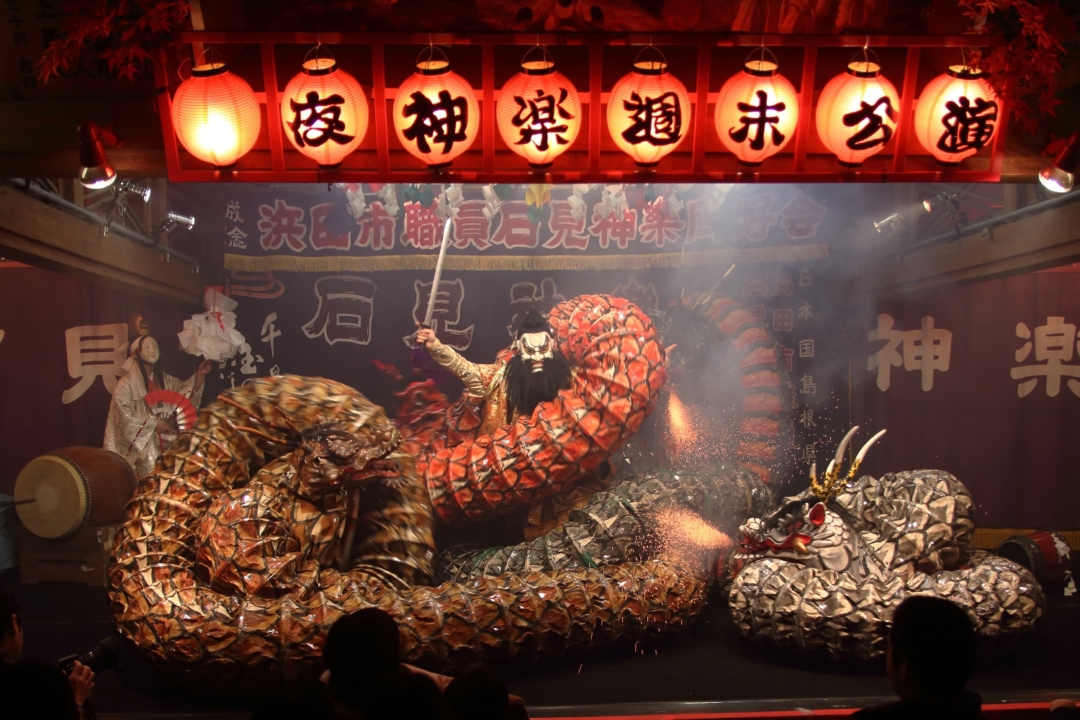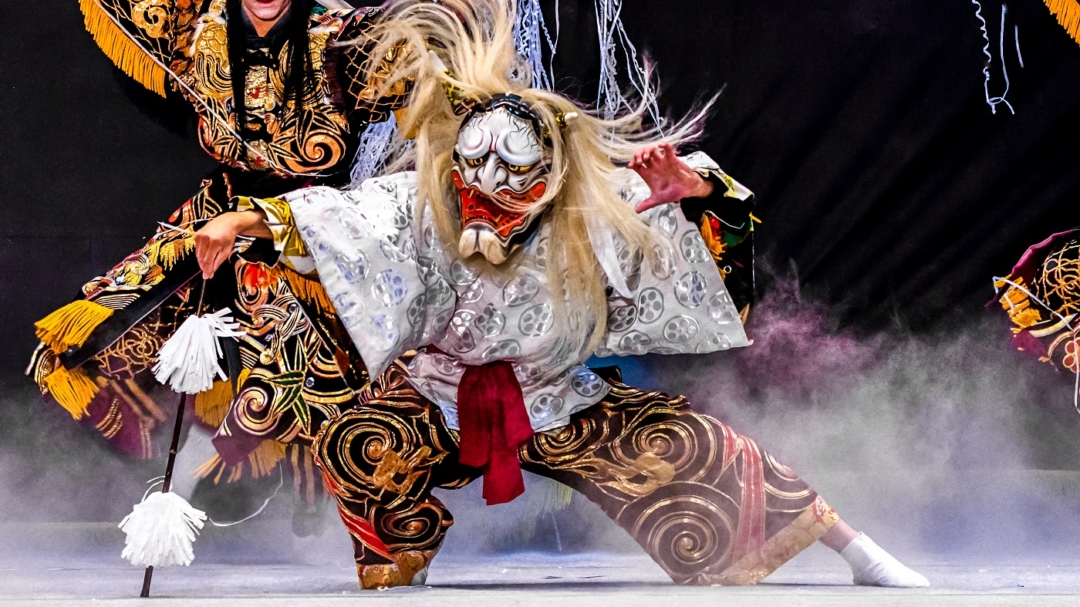Kagura, a form of traditional Japanese ritual and dance, is a performing art that has been practiced in Japan since ancient times. Its origins can be traced back to the “Amaiwato” legend, which is written in the oldest book in Japan. It is said to have begun with the dance performed by the goddess “Ama-no-Uzume-no-Mikoto” in front of the cave called “Amaiwato” to lure out the Japanese deity “Amaterasu Omikami,” who had hidden herself away.
Kagura is generally classified into two types: “Mikagura,” performed in the imperial court, and “Satokagura,” performed among the common people. Kagura has been handed down as a folk art in many regions across Japan, with each region having its own unique style of performance.
Many forms of Kagura have been handed down in the Chugoku and Shikoku regions, including “Izumo Kagura” and “Iwami Kagura” in Shimane Prefecture, “Geihoku Kagura” in Hiroshima Prefecture, “Bitchu Kagura” in Okayama Prefecture, and “Tosa Kagura” which is in Kochi Prefecture. There are also many other forms of Kagura that are deeply rooted in each region. Here are some examples.
●Iwami Kagura (Shimane Prefecture)
Iwami Kagura is performed in the Iwami region in the western Shimane Prefecture based on myths. Performers wearing gorgeous and brilliant costumes and various masks, dance leisurely to the music played by flutes and drums. There are two types of music in Kagura, one is the original Kagura piece called “Rokuchoshi”, and the other is called “Hachichosh” which is the faster tempo devised to revival Kagura. In Iwami Kagura, the latter is more common. Iwami Kagura is characterized by realistic productions, such as a giant snake breathing out fire and smoke, with easy understanding stories of good overcoming evil.

●Geihoku Kagura (Hiroshima Prefecture)
Geihoku Kagura is performed in the Geihoku region in the northwestern part of Hiroshima Prefecture, an area known for its active Kagura tradition. The practice combines “old dances” that have been passed down from the Iwami region in western Shimane Prefecture, and “new dances” that were introduced from the same region after the end of World War II. These have been preserved as local folk performing arts. Geihoku Kagura is characterized by its vibrant costumes and large masks used in performances.

Each region has its own unique Kagura with various features and flavors. While cherishing the fundamental definition of Kagura as a dance to “entertain the gods,” each region has developed its own unique Kagura, shaped by the hands of the people who live there. Please come and see the powerful and captivating Kagura up close.


